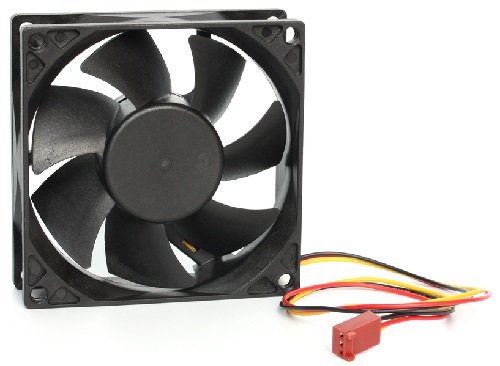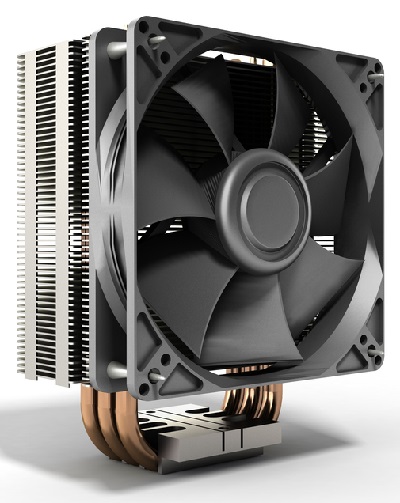The CPU and system fan header are essential components in a computer’s cooling system. The CPU fan header connects the cooling fan directly to the central processing unit (CPU), ensuring efficient heat dissipation during intensive tasks. On the other hand, the system fan header is designed to connect and control additional fans within the computer case, maintaining optimal airflow and temperature regulation for overall system stability.
Both headers play a crucial role in preventing overheating and prolonging the lifespan of vital components. Properly utilizing these headers ensures effective cooling performance and enhances the overall reliability and performance of the computer system. This article will further shed light on the different types and workings of CPU and system fan headers.
Outline
ToggleFan Header?
A fan header, or a fan connector, is a physical component on a computer motherboard designed to connect and control cooling fans. It is typically a small, rectangular connector with multiple pins or sockets that allow the fan to be powered and controlled by the motherboard.
The fan header provides power and control signals to the fan, allowing the motherboard to regulate the fan’s speed and monitor its RPM (revolutions per minute). This enables the computer system to maintain optimal temperatures by adjusting fan speeds based on the system’s heat levels. Fan headers are essential for efficient cooling and preventing components from overheating.
Types of PC Fan Headers?
1. System Fan
A system fan, sometimes called a case fan, is a type of cooling fan installed within a computer case. Its primary function is to improve airflow and dissipate heat generated by the components inside the case. The system fan is typically more extensive than the CPU fan and is strategically placed to ensure proper air circulation throughout the case. By expelling hot air and drawing in cool air, system fans help maintain optimal temperatures, preventing overheating and ensuring the reliable operation of the computer system.
2. CHA Fan
CHA Fan stands for “Chassis Fan” and refers to a specific type of fan header found on computer motherboards. The CHA Fan header is designed to connect and control cooling fans within the computer chassis or case. These fans promote airflow, dissipate heat, and maintain an optimal temperature inside the computer.
The motherboard can regulate its speed by connecting chassis fans to the CHA Fan header, ensuring effective cooling while keeping noise levels in check. CHA Fan headers are crucial in maintaining a computer system’s overall stability and longevity.
3. CPU Fan
A CPU fan is a cooling device designed to dissipate heat generated by a computer’s central processing unit (CPU). It is a crucial component that helps prevent the CPU from overheating, which can lead to performance issues and potential damage.
The CPU fan is typically attached directly to the CPU socket or connected via a fan header on the motherboard. It works by drawing heat away from the CPU and expelling it into the surrounding air, thereby ensuring the CPU operates within safe temperature limits for optimal performance and longevity.
4. CPU OPT
The CPU OPT, or CPU Optional, is a fan header on a computer motherboard that serves as an additional connection point specifically designed for cooling the central processing unit (CPU). It functions similarly to the CPU fan header, providing power and control signals to an optional CPU cooling fan. The CPU OPT header allows for more precise control and monitoring of CPU temperatures by providing an extra fan to cool the CPU. It is particularly useful for systems with high-performance CPUs or when additional cooling is desired for overclocking or intensive tasks.
5. POWER Fan
A power fan, or a power supply fan, is a cooling fan within a computer’s power supply unit (PSU). Its primary function is to draw cool air into the power supply and expel hot air generated by the internal components. The power fan ensures the PSU operates within safe temperature limits, preventing overheating and potential damage. By maintaining proper airflow and cooling, the power fan contributes to the overall stability and longevity of the computer system. It is crucial in keeping the power supply and other components functioning optimally.
System Fan Header

The system fan header allows the motherboard to provide power to the connected fans and regulate their speed based on temperature sensors or user-defined settings. By connecting system fans to these headers, users can ensure optimal airflow and cooling within the computer case, helping maintain stable temperatures and preventing crucial overheating components. System fan headers are vital in maintaining a computer system’s overall health and performance.
CPU Fan Header

Directly linking the fan to the motherboard regulates fan speed and monitors the fan’s rotations per minute (RPM). The proper utilization of the CPU fan header is crucial in maintaining optimal temperatures, preventing overheating, and safeguarding the longevity and performance of the CPU.
Differences Between the CPU Fan and the System Fan Header?
The CPU fan header and system fan header differ in their specific roles and functionalities within a computer system.
1. CPU Fan Header: The CPU fan header connects the cooling fan directly to the CPU. Its primary function is to ensure efficient heat dissipation from the CPU during intensive tasks. The CPU fan header allows for precise control of the fan’s speed based on CPU temperature readings, ensuring optimal cooling performance and preventing overheating of the CPU specifically.
2. System Fan Header: On the other hand, the system fan header is designed to connect and control additional fans within the computer case. It provides power and control signals to multiple system fans, enabling the motherboard to regulate its speeds. System fan headers help maintain proper airflow and temperature regulation throughout the entire system, including the CPU, GPU, and other components.
Difference Between 3-Pin & 4-Pin Fan Headers?
The main difference between 3-pin- and 4-pin fan headers lies in their control options.
1. 3-Pin Fan Header: A 3-pin fan header consists of three pins for connection. It provides basic functionality by supplying power to the fan and allowing it to spin at a fixed speed. The fan’s speed is not directly controllable through the motherboard, as it lacks the additional pin for PWM (Pulse Width Modulation) control. However, some motherboards can still adjust the fan speed by varying the voltage supplied to the fan.
2. 4-Pin Fan Header: A 4-pin fan header includes four pins, providing more advanced functionality. It supports PWM control, allowing the motherboard to adjust the fan speed dynamically. PWM control modulates the power supplied to the fan, enabling precise control over its speed. This allows for more efficient and fine-grained cooling, as the fan speed can be adjusted based on temperature fluctuations and system demands.
CPU Fan Header Vs System Fan Header – FAQs
Ans: It is generally possible to connect a CPU fan to a system fan header. However, keep in mind that the system fan header may not offer the same level of control and customization as a dedicated CPU fan header. Additionally, ensure that the system fan header can supply enough power to run the CPU fan adequately.
Ans: A system fan in a CPU is used to improve airflow within the computer case. It helps dissipate heat generated by various components, such as the CPU, GPU, and motherboard. By maintaining proper airflow, the system fan prevents overheating and ensures stable operation and longevity of the components.
Ans: The number of CPU fans needed typically depends on the specific requirements of your CPU and the cooling performance you desire. In most cases, a single CPU fan is sufficient for adequate cooling.
Ans: Yes, you can control the fan speed connected to both the CPU and system fan headers. The CPU fan header directly controls the CPU cooling fan’s speed based on CPU temperature readings. In contrast, the system fan header enables control of other fans within the computer case for overall system cooling.
Conclusion
In conclusion, the CPU and system fan headers play vital roles in maintaining optimal temperatures and ensuring efficient cooling within a computer system. The CPU fan header focuses on directly cooling the CPU, while the system fan header manages other fans throughout the system. By utilizing these headers effectively, users can prevent overheating, safeguard crucial components, and enhance overall system performance. Whether it’s the CPU fan header’s direct cooling of the CPU or the system fan header’s regulation of other fans, both headers contribute to the computer system’s stability, reliability, and longevity.

